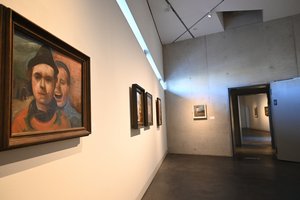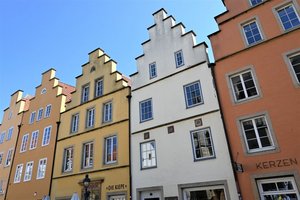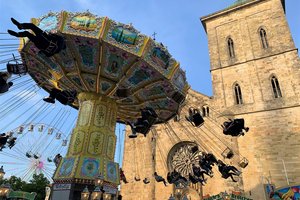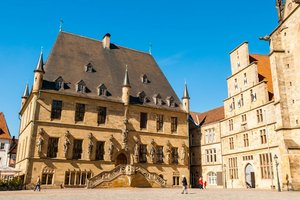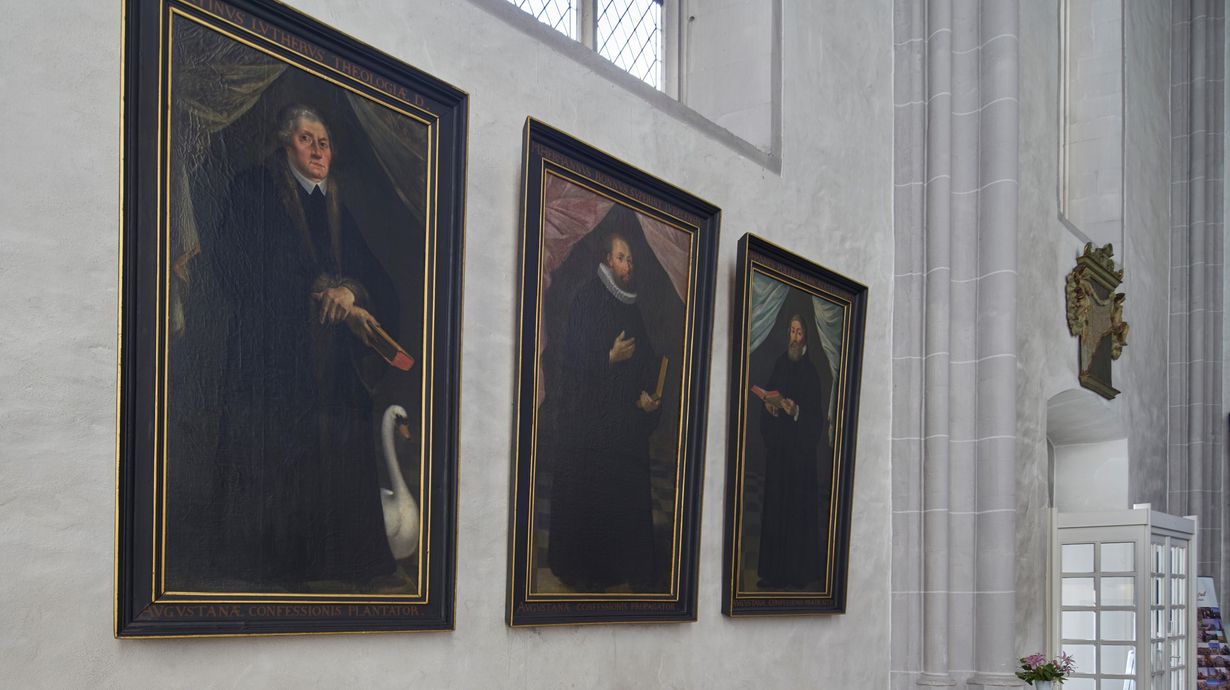St. Catherine's Church is a late Gothic hall church.
Visible from afar is its 103 m high tower, which is considered the highest medieval building in western Lower Saxony. St. Katharinen was first mentioned in the 13th century.
History:
- A record of St. Katharinen's church goes back to 1248. It was already a parish church, which was first documented by name in 1253.
- During excavations in 1990, foundation walls of a small predecessor building with 8 column foundations arranged in a circle and small remains of outer walls were found, which suggest an 8-cornered central building with 3 eastern apses (probably around 1200). These were possibly modelled on the Church of the Holy Sepulchre in Jerusalem, probably in connection with a Third Crusade (1189/90-1192) in which Bishop Arnold took part († 1190 at Acre); for 1306 replica of the Holy Sepulchre in St Catherine's Church attested;
- 1217 the celebration of St Catherine's feast was introduced in the cathedral. From St. Catherine, the wheel was probably derived as the city or diocesan coat of arms.
- Since the 12th century, it has also been considered a "noble church.
- In1543, the Lutheran doctrine was introduced. Hermann Bonnus celebrated a service here on 4.2.1543 with communion in both forms.
- During the Thirty Years' War until the occupation of the city by the Swedes, there were predominantly Catholic clergy.
- Today also a university church.
Stories / Legends:
- St. Catherine: St. Catherine was a learned prince's daughter from Alexandria who renounced the idolatry of the Roman Emperor Maximus at the beginning of the 4th century and turned to Christianity. To break her unbending will, the emperor had a wheel brought that was lined with saws and nails. Catherine was to be braided on it, but the wheel was struck by lightning beforehand and shattered. In the end, the emperor ordered Catherine to be beheaded with a sword.
- Wheel and sword are the attributes of her martyrdom.
- Tomb slab with Latin inscription under the vaulted arch between the nave and the south aisle: "A fine prince awaits the resurrection of his tender body here, who himself, after letting his brother Maximilian Wilhelm, Duke of Brunswick-Lüneburg, out of the womb of his venerable mother alive and well, was excluded from life a little later at the threshold of life. Fleeting is what he lived, lasting what he lives. Osnabrück, in the year 1666 of the month of December" (copy of the inscription of the sarcophagus discovered in 1991 in the sacristy, which was given a new place in the south aisle)
- Statue of St. Katharina:The figure above the east portal shows an unusual figure at the pedestal: the treasurer (Rentant) of the Katharinengemeinde, Oberamtsrichter Dr. Graff. He managed the money of the parish so sparingly that he had the reputation of being a great miser. He had probably also squeezed the artist's wages hard, and so Heinrich Seling vented his anger by depicting the rendant with a crown as a sign of wealth. In doing so, he sits on the money and convulsively closes the sack with his hands.
